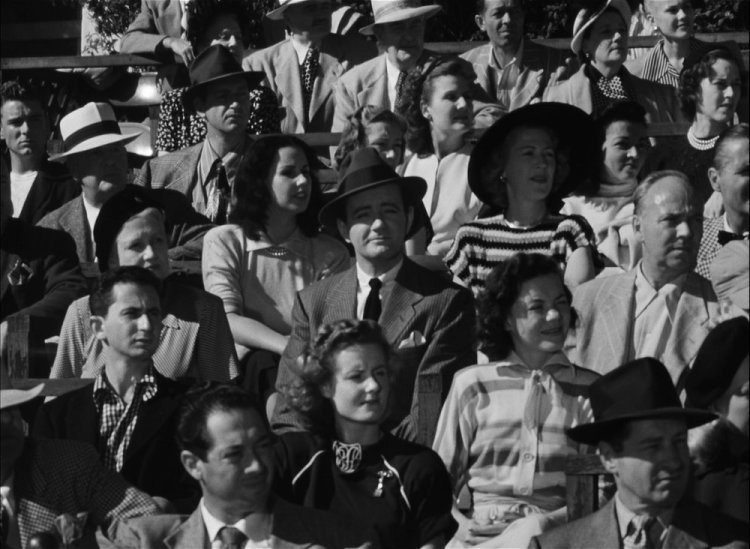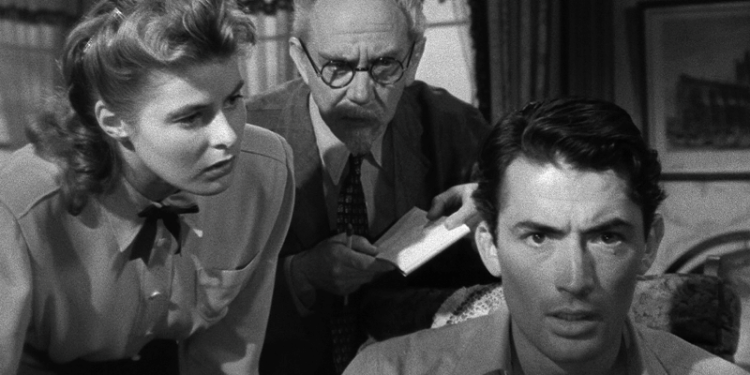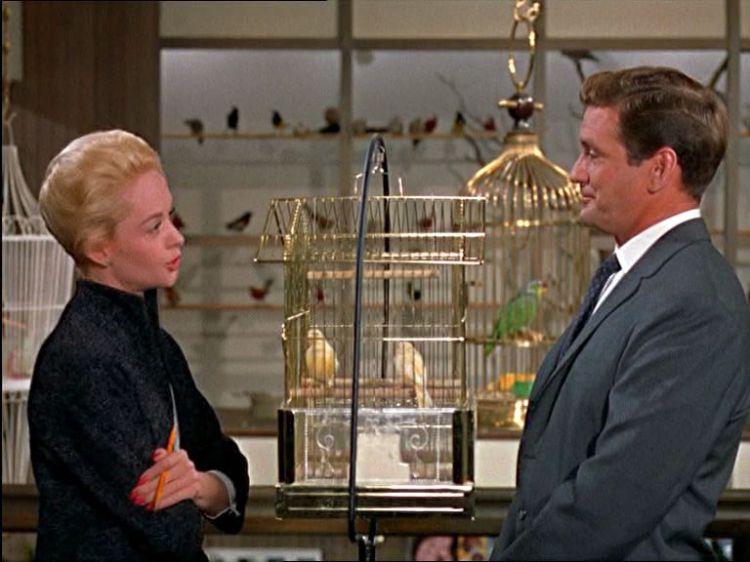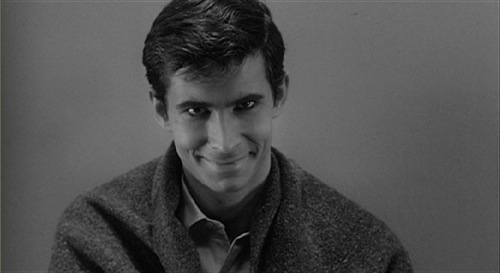The Lighthouse is putting the Master of Suspense back on the big screen in September and October with a major retrospective comprising ten films from nearly two decades of work. A new restoration of Strangers on a Train is a highlight of a season showcasing icy blondes, blackly comic moments, pure cinema suspense sequences, and the greatest of director cameos.
STRANGERS ON A TRAIN
From 13th September
People who’ve never seen the film know what is meant by uttering the title. Robert Walker’s psychotic socialite Bruno propounds to Farley Granger’s pro tennis star Guy, who he’s just met on a train, a very plausible theory on how two complete strangers could both get away with murder. By swapping murders the complete absence of motive would stump detection. And Bruno means to prove it… Patricia Highsmith’s first novel epitomised her creeping unease and smiling sociopaths, and Hitchcock embellished it with visual flourishes (reflections of murder in a glass, one sports spectator remaining aloof) and nail-biting suspense.
ROPE
From 14th September
Farley Granger and John Dall are the two young men, clearly modelled on the infamous real-life killers Leopold and Loeb, who strangle a classmate they have decided is inferior in their Nietzschean scheme of things. Displaying a sadistic sense of humour they hide his body in their apartment, invite his friends and family to a dinner party, and serve the food over his dead body. Can their mentor Jimmy Stewart rumble the perfect crime? This was shot by Hitchcock in ostentatiously long 10 minute takes that cut together by means of ‘jacket-wipes’ to give the impression of one unbroken real-time visualisation.
MARNIE
From 19th September
Tippi Hedren’s second film for Hitchcock cast her as the titular compulsive thief, troubled by the colour red, and the touch of any man, even Sean Connery at the height of Bond fame. Bernard Herrmann’s final Hitchcock score (though his rejected Torn Curtain music appeared in Scorsese’s Cape Fear) buoys some dime store pop psychology as Hitchcock displays a less than sure touch in navigating the line between twisted romance and twisted obsession. There is an infamous scene between Connery and Hedren that is arguably the beginning of the decline towards ever more showy cinematic conceits housed in increasingly mediocre films.
VERTIGO
From 20th September
Hitchcock’s 1958 magnum opus recently toppled Citizen Kane from its perch as the ‘greatest film ever made.’ Hitchcock burned money perfecting the dolly-in zoom-out effect so crucial for depicting Jimmy Stewart’s titular condition; and Spielberg cheekily appropriated it for one show-off shot in Jaws. The twisted plot from the French novelists behind Les Diaboliques is played brilliantly by the increasingly unhinged Stewart, Kim Novak as the anguished blonde he becomes obsessed with, and a young Barbara Bel Geddes as the friend who tries to keep him grounded. Visually gorgeous, lushly scored, and dripping pure cinema sequences without any dialogue – see this.
SPELLBOUND
From 22nd September
Ingrid Bergman’s psychiatrist protects her new boss (Gregory Peck) who turns out to be an amnesia victim accused of murder. On the run she attempts to recover his memory, while her old boss Leo G Carroll insists that Peck is a dangerous killer. Salvador Dali famously designed the dream sequence to explain Peck’s trauma, but producer David O Selznick cut it to ribbons. He had insisted Hitchcock make this picture anyway to fulfil his contract because Selznick had had a wonderful time in therapy. Hitchcock had a less wonderful time, even Miklos Rozsa’s score introducing the brand new theremin irked him.
THE TROUBLE WITH HARRY
From 23rd September
The trouble with Harry is a bit of a curate’s egg. Foreign Correspondent’s hit-man Edmund Gwenn returns to the Hitchcock fold, and Shirley MacLaine makes her very winning film debut, but this is a black comedy that ends up more of a droll half-romantic drama. Four people in a Vermont village, led by his estranged wife, spend a Fall day running around with Harry’s dead body; one step ahead of the authorities, and each convinced twas they that did him in. After from MacLaine’s debut one must point out that from this unremarkable beginning grew the Hitchcock/Herrmann partnership.
NORTH BY NORTHWEST
From 26th September
Hitchcock and screenwriter Ernest Lehman abandoned a fruitless novel adaptation for a scenario dazzlingly showcasing scenes Hitchcock had always longed to film; a murder at the United Nations, a man attacked by a crop-duster in an empty landscape. Cary Grant’s MadMan (cough) Roger O Thornhill; a man as hollow as his affected middle initial; blunders into spymaster Leo G Carroll’s elaborate ruse and is ruthlessly and lethally pursued across America by the sinister James Mason and his clinging henchman Martin Landau, all the while dallying with their dangerous associate Eva Marie Saint. Hitchcock’s preoccupations were never explored more enjoyably…
THE BIRDS
From 30th September
Hitchcock spun out Daphne Du Maurier’s short story which had been inspired by her simple thought when watching a flock wheel towards her over a field, “What if they attacked?,” into an unsettling and bloody film. Socialite Tippi Hedren’s pursuit of the judgemental lawyer Rod Taylor to his idyllic small town on the bay seems to cause the local birds to turn homicidal, but don’t look for explanations – just enjoy the slow-burn to the bravura attacks. Watch out for Alien’s Veronica Cartwright as Taylor’s young sister, and a bar stool philosophiser allegedly modelled on Hitchcock’s bruising encounters with Sean O’Casey…
DIAL M FOR MURDER 3-D
From 3rd October
Warner Bros. insisted that Hitchcock join the 3-D craze, so he perversely adapted a play without changing it much, something that had bedevilled cinema during the transition to sound. Hitchcock has immense fun layering the furniture of Grace Kelly’s flat, but after the interval (sic) largely loses interest in 3-D and focuses on Frederick Knott’s, ahem, knotty plot in which tennis pro Ray Milland blackmails Anthony Dawson into bumping off rich wife Grace Kelly. John Williams, who also appears in To Catch a Thief, is in fine form as the detective trying to puzzle out the crime.
PSYCHO
From 10th October
Hitchcock’s low budget 1960 classic boasted one of the drollest trailers imaginable and his direction is equally parodic in the first act, with its sinister traffic-cop pursuit and endless misdirection, because Hitchcock relished investing the audience in a shaggy-dog story which sets up a number of prolonged blackly comic sequences as well as some chilling suspense. Anthony Perkins’s Norman Bates emerges as a terrific resonant villain, especially in the chilling final scene scored by Bernard Herrmann with full-on Schoenbergian atonal serialism. The shower scene with Janet Leigh being slashed to Herrmann’s bravura stabbing strings orchestration remains an iconic ‘pure cinema’ scare.
Tickets can be booked at the Lighthouse’s website (www.lighthousecinema.ie).










Leave a comment